You can achieve this using SCNTechnique and Metal shaders.
The gist of it is to create a vertex shader that creates a fullscreen quad and mirrors the u coordinate:
vertex VertexOut mirrorVertex(VertexIn in [[stage_in]])
{
VertexOut out;
out.position = in.position;
// Mirror the U coordinate: (1.0 - ..)
out.uv = float2(1.0 - (in.position.x + 1.0) * 0.5, 1.0 - (in.position.y + 1.0) * 0.5);
return out;
};
The fragment shaders is a simple passthrough shader:
fragment float4 mirrorFragment(VertexOut vert [[stage_in]],
texture2d<float, access::sample> colorSampler [[texture(0)]])
{
constexpr sampler s = sampler(coord::normalized,
address::clamp_to_edge,
filter::linear);
return colorSampler.sample( s, vert.uv);
}
You can create an SCNTechnique by created a technique definition in a .plist file first. Here you specify passes, shaders, input and outputs targets and a sequence. In this case the definition is quite simple:
<?xml version="1.0" encoding="UTF-8"?>
<!DOCTYPE plist PUBLIC "-//Apple Computer//DTD PLIST 1.0//EN" "http://www.apple.com/DTDs/PropertyList-1.0.dtd">
<plist version="1.0">
<dict>
<key>passes</key>
<dict>
<key>pass_mirror_camera</key>
<dict>
<key>draw</key>
<string>DRAW_SCENE</string>
<key>metalVertexShader</key>
<string>mirrorVertex</string>
<key>metalFragmentShader</key>
<string>mirrorFragment</string>
<key>inputs</key>
<dict>
<key>colorSampler</key>
<string>COLOR</string>
</dict>
<key>outputs</key>
<dict>
<key>color</key>
<string>COLOR</string>
</dict>
<key>draw</key>
<string>DRAW_QUAD</string>
</dict>
</dict>
<key>sequence</key>
<array>
<string>pass_mirror_camera</string>
</array>
</dict>
</plist>
You also need to create a Metal shader (.metal) file containing the vertex and fragment shader:
//
// MirrorShaders.metal
// MirrorCamera
//
// Created by Dennis Ippel on 14/05/2019.
// Copyright © 2019 Dennis Ippel. All rights reserved.
//
#include <metal_stdlib>
using namespace metal;
#include <SceneKit/scn_metal>
struct VertexIn
{
float4 position [[attribute(SCNVertexSemanticPosition)]];
};
struct VertexOut
{
float4 position [[position]];
float2 uv;
};
vertex VertexOut mirrorVertex(VertexIn in [[stage_in]])
{
VertexOut out;
out.position = in.position;
// Mirror the U coordinate: (1.0 - ..)
out.uv = float2(1.0 - (in.position.x + 1.0) * 0.5, 1.0 - (in.position.y + 1.0) * 0.5);
return out;
};
fragment float4 mirrorFragment(VertexOut vert [[stage_in]],
texture2d<float, access::sample> colorSampler [[texture(0)]])
{
constexpr sampler s = sampler(coord::normalized,
address::clamp_to_edge,
filter::linear);
return colorSampler.sample( s, vert.uv);
}
You can then put everything together in your view controller and assign the technique to your SCNView instance:
if let path = Bundle.main.path(forResource: "MirrorCamera", ofType: "plist") {
if let dict = NSDictionary(contentsOfFile: path) {
let dict2 = dict as! [String : AnyObject]
let technique = SCNTechnique(dictionary:dict2)
sceneView.technique = technique
}
}
Resulting in:

